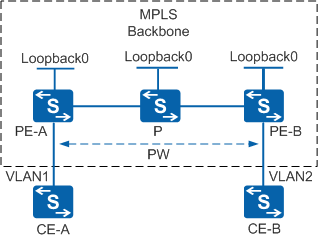LSP Jitter Test
The NQA LSP jitter test measures the jitter, delay, and packet loss ratio on LDP LSPs or TE LSPs based on the timestamps in test packets.
The LSP jitter test process is as follows:
The source constructs a UDP MPLS Echo Request packet whose destination IP field is an IP address on the 127.0.0.0/8 block. The source then searches for the corresponding LSP and forwards the packet through the LSP in the MPLS domain at a certain interval. If a matching TE LSP is found, the packet can be sent from a tunnel interface and then forwarded along a specified CR-LSP.
The destination (PE-B) monitors port 3503, adds a timestamp to each received packet, and sends an MPLS Echo Reply packet to the source.
The source receives the MPLS Echo Reply packets and calculates the jitter by subtracting the interval at which consecutive packets are sent from the interval at which the destination receives them.
The source can also calculate the maximum, minimum, and average jitter time in the transmission of packets from the source to the destination.

LSP jitter test results and historical records are collected in test instances. You can run commands to view the test results and historical records.